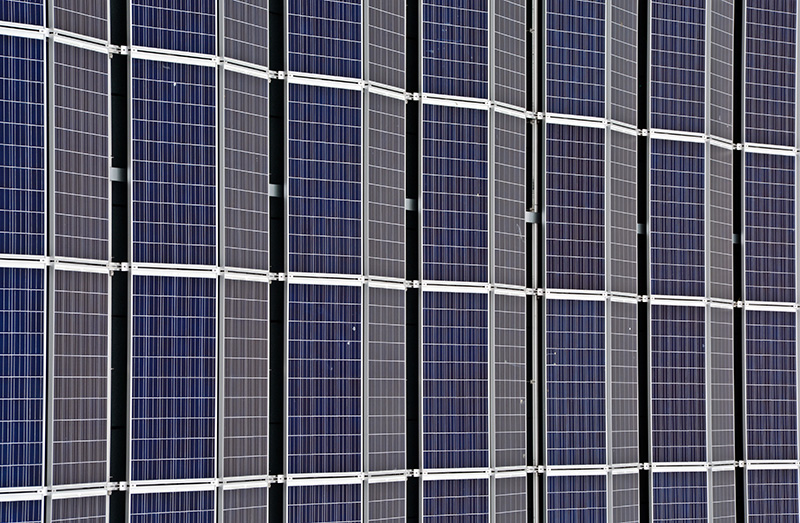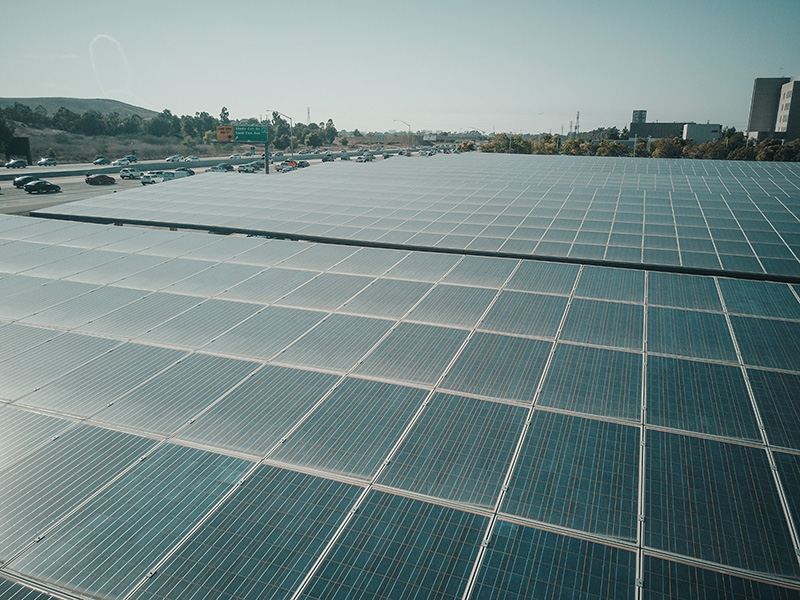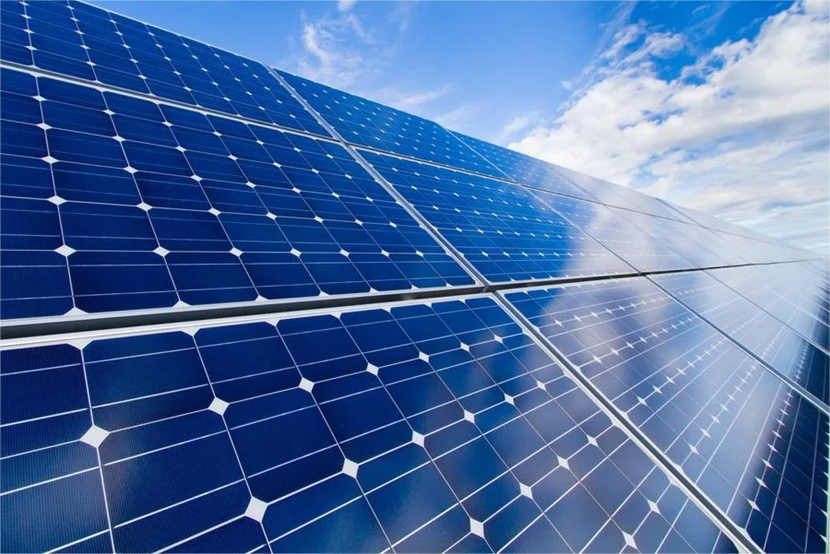Description
A 100W solar panel, under optimal sunlight conditions, can generate roughly 100 watt-hours of electricity in an hour. Such a panel can comfortably power several LED bulbs for a few hours, fully charge smartphones multiple times, run small appliances like radios, or power a small table fan for several hours. It's also suitable for charging tablets and laptops for a limited duration. Campers often use 100W panels to support camping lights and other low-consumption gear.
Understanding Wattage and Energy Consumption
Wattage, a unit of power, serves as a cornerstone to comprehend the energy needs of devices and appliances. It plays a crucial role in solar energy, especially when determining the potential applications and limitations of solar panels like the 100w variant.
Definition of a Watt
A watt (W) is the unit of power in the International System of Units (SI). It's named after the Scottish engineer James Watt. Essentially, it represents the rate of energy transfer or conversion. If a device requires 100 watts, it means it needs 100 joules of energy per second to operate. For instance, a
light bulb labeled as 60W consumes energy at a rate of 60 joules per second.
Calculating Energy Needs of Common Devices
To utilize solar panels effectively, understanding the energy requirements of your devices is paramount. Let's take an example:
A laptop typically consumes about 50W per hour. If you were to run this laptop using a 100W solar panel, it would effectively use half of the panel's potential. On the other hand, small gadgets like smartphones often have an energy consumption rate of around 5W to 10W when charging. Hence, with a 100W solar panel, you could potentially charge 10 smartphones simultaneously.
Other devices have varied energy requirements. For instance, a refrigerator can consume between 100W to 200W depending on its size and model, while LED lights might use only 5W to 15W. It's always beneficial to check the energy rating label or manufacturer's details, often found at the back or bottom of devices, for accurate wattage needs.
This knowledge will not only guide efficient usage but also ensure the longevity and optimal performance of both your solar panels and devices.
Residential Applications
Harnessing the power of the sun for household needs has become increasingly popular. A 100W solar panel, though on the smaller side, can cater to various residential applications. This eco-friendly power solution can save on electricity bills, reduce carbon footprint, and promote sustainable living.
Lighting Solutions
Solar power is a fantastic solution for household lighting. With energy-efficient bulbs like
LEDs, a 100W solar panel can easily power several lights for many hours. For instance, if an LED bulb consumes 10W, then a fully charged solar battery from a 100W panel can potentially light up ten of these bulbs for an hour.
Charging Devices
In our digital age, the demand for charging smartphones, tablets, laptops, and other devices is constant. A 100W solar panel is perfectly capable of meeting these demands. For example, a typical smartphone might need 5W-10W to charge. With a 100W solar panel, you can easily charge several phones or a couple of laptops at the same time. This makes solar panels particularly valuable during power outages or in off-grid living situations.
Small Kitchen Appliances
While most large kitchen appliances require more power than a 100W panel can provide, there are smaller devices that it can handle efficiently. This includes coffee makers, blenders, toasters, or electric kettles with lower wattage. Before using a solar panel for these purposes, it's essential to check the wattage of the appliance to ensure it aligns with the panel's capacity.
Fans and Ventilation Systems
For places where air conditioning might be excessive or not feasible, fans and ventilation systems offer relief. Many standard fans, especially smaller desk fans or ceiling fans on lower settings, can operate within the energy provided by a 100W solar panel. Additionally, ventilation systems, especially in bathrooms or basements, can also be powered to ensure consistent airflow and reduce humidity.
In conclusion, while a 100W solar panel might not power an entire home, its potential in catering to specific needs within a household is undeniable. As technology advances and devices become more energy-efficient, the role of these solar panels in residential settings is bound to expand.
Outdoor and Recreational Uses
Solar panels, especially the 100W variants, aren't limited to just household applications. Their portable nature makes them ideal companions for outdoor and recreational activities. Whether you're an avid traveler, a camping enthusiast, or simply enjoy spending time outdoors, a 100W solar panel can offer you the convenience of on-the-go power.
Camping and Traveling Needs
For those who love the great outdoors, camping trips are a cherished activity. However, being away from the grid doesn't mean compromising on certain comforts. A 100W solar panel can cater to various camping essentials, such as powering small coolers to keep your food fresh, running a camping light for those nighttime stories, or even operating a small heater on colder nights. Furthermore, if you're on the road, these solar panels can come in handy for RV travels. Whether it's keeping your GPS system alive or ensuring your
portable fridge runs smoothly, solar panels are a traveler's best friend.
Portable Electronic Devices
In this digital age, staying connected, even while being outdoors, is often necessary. Whether it's for capturing those picturesque views on your camera, navigating trails with your GPS, or simply staying connected with your loved ones via your smartphone, a 100W solar panel ensures your devices remain charged. Many solar panels come with USB ports, making it convenient to directly charge these gadgets, especially when outlets are a rarity.
Solar-Powered Outdoor Lighting
Gardens, patios, and outdoor paths can be aesthetically enhanced and made safer with the right lighting. Solar-powered lights are a sustainable and cost-effective solution. From decorative fairy lights to more functional pathway lights, these can be charged during the day using a 100W solar panel and then provide illumination throughout the night. Not only does this save on electricity bills, but it also ensures a reduction in carbon footprint, making your evenings both beautiful and eco-friendly.
In summary, outdoor and recreational uses of solar panels merge the beauty of nature with the conveniences of modern technology. A 100W panel, with its portability and efficiency, ensures you stay powered, connected, and illuminated, no matter where your adventures take you.
Limitations of a 100w Solar Panel
While a 100W solar panel brings a plethora of advantages, especially in portability and affordability, it's also essential to understand its limitations. Acknowledging these limitations ensures realistic expectations and optimal utilization of the panel's capacity.
Factors Affecting Energy Production
- Sunlight Exposure: The efficiency of a solar panel is directly related to the amount of sunlight it receives. A day with intermittent cloud cover can significantly reduce energy production.
- Panel Angle: The angle at which the solar panel is placed matters. It should ideally be perpendicular to the sun's rays for maximum energy absorption. Adjustable mounts can help optimize this angle throughout the day.
- Dirt and Debris: Accumulation of dust, leaves, or bird droppings can obstruct sunlight and lower the efficiency of the panel. Regular cleaning and maintenance are crucial.
- Temperature: While solar panels need sunlight, they don't perform well in excessively high temperatures. Extremely hot conditions can reduce the panel's efficiency, as many panels have an optimal temperature coefficient.
Devices Beyond the Capacity of a 100w Panel
- Large Appliances: Items like washing machines, dryers, and large refrigerators require more energy than a 100W panel can provide.
- Heating Systems: Space heaters or water heaters are energy-intensive and cannot run efficiently on just a 100W panel.
- High-powered Tools: Devices like electric saws or large drills typically demand more wattage than what the panel can offer.
Geographical and Seasonal Constraints
- Latitude: Areas closer to the poles receive less intense sunlight compared to regions near the equator. Hence, the energy output might be reduced in higher latitude areas.
- Seasonal Variations: Winter months, especially in northern or southern regions, have shorter daylight hours, leading to reduced energy production.
- Local Landscape: The presence of tall buildings, trees, or mountains can block sunlight, especially during sunrise and sunset, affecting the efficiency of the solar panel.
Recognizing these limitations helps users plan and adapt. For instance, if one knows their solar panel might not generate sufficient energy during winter, they might opt to combine multiple panels or look for alternate energy sources during those times.
Maximizing Efficiency and Output
Solar panels, particularly 100W panels, have become a staple for many households and outdoor enthusiasts. While they provide a sustainable source of energy, getting the most out of them requires some knowledge and effort. By implementing a few best practices and pairing the panel with supplementary equipment, users can significantly boost their energy output and reliability.
Best Practices for Panel Placement
- Optimal Direction: Depending on your hemisphere, ensure the solar panels face the direction where they can capture maximum sunlight. For instance, panels should face true south in the Northern Hemisphere and true north in the Southern Hemisphere for optimal energy absorption.
- Tilt and Angle: Solar panel efficiency can vary by as much as 25% depending on the angle they're placed at. Ideally, the tilt angle should match the latitude of the location. This means if you're at a 30° latitude, a tilt of 30° is generally optimal.
- Shadow Monitoring: A studyshows that even a small shadow, such as that from a tree branch, can lead to a significant reduction in a solar panel's output. Therefore, ensuring that the panel remains free from shadows throughout the day is crucial.
- Ventilation: Panels can lose up to 0.5% of their efficiency for every degree above 25°C (77°F). Therefore, maintaining airflow around the panels can keep them cooler and operating at higher efficiency.
Battery Storage Solutions
Pairing your solar panel with an efficient battery storage system is a game-changer. Here's why:
- Continuous Power Supply: Solar energy is intermittent. With batteries, the energy stored during sunlight hours can be used during the night or cloudy days, ensuring a consistent power supply.
- Choosing the Right Battery: Lithium-ion batteries have higher energy densities and longer life cycles compared to traditional lead-acid batteries. Some batteries can have up to a 90% charge/discharge efficiency.
- Brands to Consider: Apart from popular names like Tesla, Tongwei is a noteworthy brand that offers efficient solar panels and associated products. Their panels are known for their durability and performance.
Combining Multiple Panels
- Boosting Output: While a single 100W panel has its capacity, connecting several in a series or parallel arrangement can significantly increase your total energy output. For instance, four 100W panels can provide an output comparable to a single 400W system.
- Space Considerations: When combining panels, ensure you have sufficient space for placement without compromising on the best practices mentioned above.
In conclusion, while a 100W solar panel offers numerous benefits on its own, its efficiency and output can be significantly enhanced through strategic placement, optimal storage solutions, and by using high-quality panels like those from
Tongwei. Investing in these practices ensures a more sustainable and reliable energy source for users.
Environmental and Economic Benefits
Harnessing the sun's power via solar panels not only aligns with an eco-friendly approach but also offers substantial economic advantages. Both these aspects have driven the rapid adoption of solar energy, paving the way for a greener and more sustainable future.
Carbon Footprint Reduction
Solar panels inherently produce clean energy, which plays a vital role in curbing harmful emissions.
- Emissions Offset: Solar panels effectively offset tons of carbon dioxide throughout their lifespan. For instance, a single residential solar panel installation can prevent the emission of approximately 100,000 lbs. of carbon dioxide over 20 years.
- Cleaner Air: By reducing the reliance on fossil fuels, solar panels contribute to reducing harmful pollutants like sulfur dioxide and particulate matter. This leads to improved air quality, positively impacting public health.
- Combatting Climate Change: Solar energy directly contributes to the global effort to mitigate climate changeby reducing greenhouse gas emissions.
Long-term Cost Savings
While the initial investment in solar panels can be high, the long-term savings are substantial.
- Reduced Electricity Bills: After installing solar panels, many households report a 50-90% reduction in their monthly electricity bills.
- Tax Credits and Incentives: Many governments offer attractive incentives for solar installations, reducing the overall cost. The US, for instance, had a federal solar tax credit, allowing homeowners to deduct a portion of their solar installation costs from their taxes.
- Increased Property Value: Homes equipped with solar panel systems have seen an increase in property value by up to 4.1%, according to some studies.
Reducing Dependence on Non-renewable Energy Sources
Transitioning to solar energy has broader implications for global energy politics and resource management.
- Conserving Finite Resources: Solar energy reduces the dependence on finite fossil fuels, ensuring a steady energy source for future generations.
- Enhanced Energy Security: By diversifying energy sources, countries can become less dependent on imported fossil fuels, promoting national energy security.
- Promoting Sustainable Growth: Transitioning to renewable energy sources like solar ensures that growth and development don't come at the expense of our planet's well-being.
In sum, the shift towards solar energy, with its multitude of environmental and economic benefits, is not just a trend. It's a necessity for a brighter, greener, and more sustainable future. Investing in solar panels is not just a personal financial decision but a step towards global sustainability.



